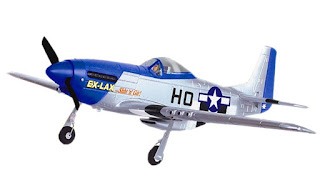 |
| Source : aliexpress |
3D
A form of flying style. With special acrobatic flying
characters that are generally below the stall speed. For example torque rolls,
'walk in the park', harriers, hangers, etc.
BC / Non-Ringed
Generally this term is heard in a nitro engine, ABC stands
for A = Aluminum, B = Brass, C = chrome or Composite like Nickel
This engine uses an aluminum piston and a Liner Cylinder
from Chrome or composite coated brass that makes the engine more efficient for
high performance. This machine does not use piston rings and pistons with very
tight cylinder liners. The latest ABC machines like JBA Engine, generally hard
/ heavy to play
As it’s by hand. Because it is very tight it is not
recommended to rotate the ass machine by hand without any fuel coming in
Adjustable Travel Volume (ATV).
ATVs are used to set the maximum travel servo on each side
of the servo's neutral point. Setting ATV is useful for servo moves according
to the control we want that will affect the style of flying or style.
After Run Oil
Special lubricant in design to remove residual unburned
fuel. Fuel can cause corrosion or rust in some parts of the machine. By using
the after run oil, the remaining fuel is removed, and the machine parts give a
new protective layer. Cheap way to take care of the machine and keep the
machine running long.
Ailerons
The control surfaces on the rear end of the wing are used to
turn in opposite motions (one up, one down). One aileron will push the air up
and one aileron will push the air down. This will make the plane turn
Or do rolling motion, so if roll right, and then right
aileron will go up.
Airfoil
Wings shape when viewed from the side. Usually shaped like
water drops
Amphibian
Aircraft that can carry off or landing on land and in water,
With design like hull ship, or by using float. An amphibious
plane can land on the water and then pull out the wheels to rise in the air.
Angle of Attack
The angle on the wings to split the air at the time of
flight, the more the angle increases the more float but will result in
obstacles at the speed of the plane in accordance with the angle used.
Area
Figures, usually shown with units of square inches or feet
to show the wingspan.
ARF
The term model, which shows under the model of the aircraft
/ helicopters is almost ready to fly, but still adds some more items to be
ready to fly properly, such as engines etc.
The term ARF is now in use also on the electric plane, but
in Indonesia the meaning is slightly different, where ARF electric in Indonesia
means the electric aircraft is already included servo, motorcycle, esc,
propeller or even battery and charger.
Axis
Imaginary lines where the body rotates to the left or right.
Backlash
One that states the condition of the wheel of the plane, too
loose to slip or too tight, and the result that it produces
Ball Link
The connector uses a sphere and a circular link that sills
the ball, used to connect the servo to the controller of the driving surface
such as rudder etc.
Base Load Antenna
Short antenna on the model, which is used to replace the
long antenna model
Battery Eliminator Circuitry (BEC)
An electronic circuit used to lower the voltage (volt) to
achieve the voltage required by the receiver. BEC is commonly used in electric
RC, but is also now used on engine-powered RCs when using lithium batteries
BB
This abbreviation shows the stance BALL BEARING on
crankshaft RC machine. Ball bearings will make the machine more smooth and durable.
Binding
Something that happens when the servo works exceeds the
strength of the circle or the circle is too long or short.
Blade Balancer
Also called "'prop balancer" on the plane. Used to
see the balance of propeller or blade from side to side to eliminate vibration.
Blade Strike
A condition where propeller / blade hit another object. It
looks like minimal damage, but the blade or propeller should be checked
carefully and note the quality of its strength for flight safety, if unsure,
better replaced.
Boring Holes in the Sky
Fly Fun on r / c plane regardless of pattern or flight path.
Buddy Box
2 the same transmitter is connected by a cable (trainer
cord). This is very useful for learning to fly, or just the same plane has dual
control. Instructor can immediately take control of the aircraft / heli with
"trainer switch" on the transmitter.
CA (Abbreviation for "Cyanoacrylate")
Instant glue with some vikositas, (thin, medium, think and
gel). This type of glue is suitable for balsa aircraft and other materials. CA
has a stronger strength than Super Glue. But do not use on plane with foam
material
Source : http://gaero.org



